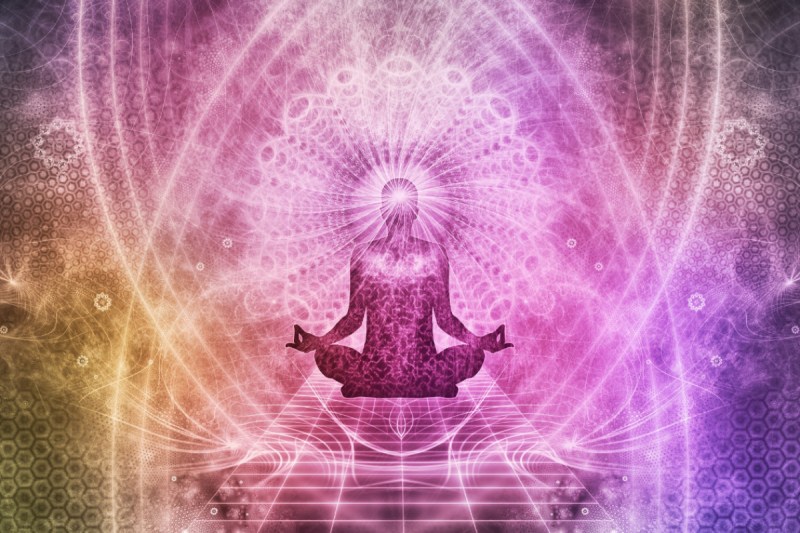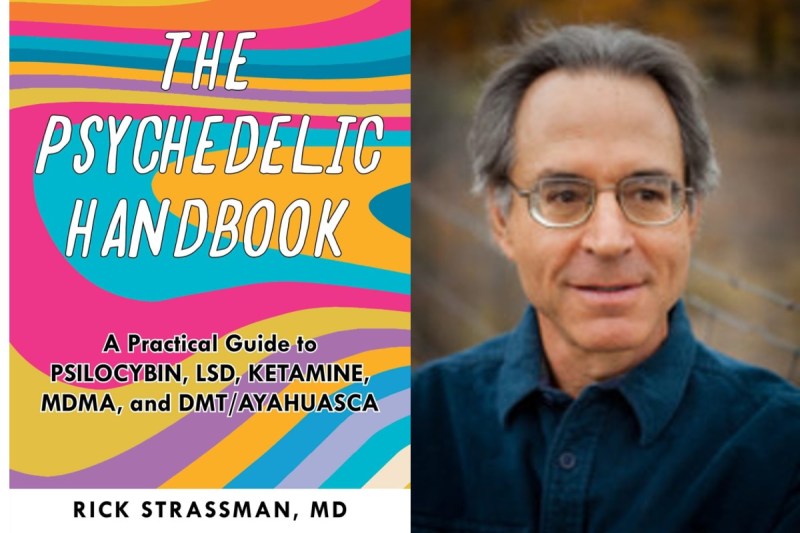
Few people on Earth (or perhaps beyond?) can explain psychedelics as well as Dr. Rick Strassman. While he’s particularly well known for his foundational research on DMT, his expertise spans psilocybin, LSD, MDMA, ketamine, ayahuasca, mescaline, and a few others you might not have even heard of. Suffice it to say that he’s one of the biggest names in psychedelics, and having read hundreds of wide-ranging research papers on the topic, I’ve noticed that he is among the most frequently cited names in the field.
In 2000, Dr. Strassman rose to prominence with the release of his first book, DMT: The Spirit Molecule, in which he shared a decade’s worth of research on the substance. He was among the first of a new wave of psychedelic researchers to emerge in the early 1990s after decades of prohibition, and his scientifically- and medically-backed advocacy for psychedelics helped fuel the research boom and drive the psychedelic renaissance in which we find ourselves today.
Recently, Dr. Strassman published The Psychedelic Handbook: A Practical Guide to Psilocybin, LSD, Ketamine, MDMA, and Ayahuasca, which – as the name suggests – provides an in-depth overview of the realm of psychedelics. This includes a compendium of the latest research, detailed information about specific drugs, and practical advice on undertaking the experience itself.
Dr. Strassman agreed to speak with The Manual in a talk that spanned his book, the psychedelic experience, and his thoughts on the modern psychedelic movement. You’ll find this interview below, but first – our review of The Psychedelic Handbook.

Review: The Psychedelic Handbook by Rick Strassman
Clocking in at a concise 224 pages, The Psychedelic Handbook packs a steady supply of information into a quick read. It covers all the substances you would expect it to, as well as a few you probably don’t think about or haven’t heard of, like ibogaine and salvia. It also juxtaposes the DMT associated with ayahuasca and that of “the toad” – 5-methoxy-DMT. Benefits and risks, the science and history, legality, and the specific experiences imparted by each: Dr. Strassman covers just about all of the psychedelic bases. As he put it during our interview, “I wanted to write a book about psychedelics by someone who knew what they were talking about. There has been so much hype, and a lot of information comes from those who might not be especially well-versed in clinical work, research, or personal experience.” Having experimented with psychedelics extensively, he is just the person to write such a guidebook.
As a highly experienced psychonaut, I can verify that he provides solid information and descriptions throughout. The book is pitch-perfect for psychedelic initiates who are looking for orientation into the weird field. As Dr. Strassman mentions himself, few things are as important to getting the most out of a psychedelic “trip” as proper education, and The Psychedelic Handbook delivers a thorough introduction.
The more psychedelically experienced out there might find this work to be a bit cursory. That is its intention, however — to provide a straightforward and approachable guide to these frequently confounding drugs — and it accomplishes it well. Just be aware that it’s not really tailored to the expert-level experience.
All in all, it’s a quality resource for those who are curious about psychedelics. As these drugs — whether for psychedelic therapy or just plain old fun — gain in popularity, this sort of preparatory information is increasingly essential. Psychedelic education is distinctly lacking in our culture, and even experts and frequent users tend to hold outdated ideas that have been increasingly disproven by contemporary research. (See Dr. Strassman’s thoughts on microdosing below for an example of this.)
And now, without further ado, on with the interview.
Interview with Dr. Rick Strassman
Maximizing the psychedelic experience
Psychedelics are powerful substances that can do radically good things for the user, but they can also be somewhat arduous. According to Dr. Strassman, you can help to get the most out of a psychedelic experience if you prepare by being “healthy, mentally and physically. Clarify your intent. Have a safety plan in place. Make sure the people around you and the physical environment are safe.”
That means eating healthy foods in the days leading up to your trip, taking steps to calm your mind (like talk therapy, yoga, or meditation), and generally doing whatever is in your capacity to improve your health. From my experience, it’s best to prepare over the long term by maintaining a healthy lifestyle rather than hoping to “cram” for the experience in the hours or days leading up to it.
When it comes to clarifying your intent, that means having a clear idea of why you want to take psychedelics and what you hope to achieve by the experience; recreation is a valid goal, by the way, as Dr. Strassman noted both in his book and during our interview.
A safety plan can involve alerting a non-tripping person to your intentions or having a strategy in place for if things get too intense — planning access to someplace quiet where you can escape overstimulation, for example. A safe environment means that you’re taking psychedelics someplace that is physically and legally safe (i.e., no cops, not in a field of broken glass, etc.), and in the company of people you can trust.
In his book, he also explained that “the more tools you have at your disposal to process what the drug shows you, the more you will get out of it.”
In our interview, he expanded on this concept: “If you are conversant with the altered state literature, how various traditions, cultures, religions interact with altered states to get the most out of them, you could follow their lead. For example: What kind of questions to ask, how to understand what you’re seeing, how to communicate what you have just undergone. Having a larger rather than smaller vocabulary helps with communication and understanding what you’ve seen. Emotional stability in the face of unusual experiences. A set of beliefs about nonphysical realms that could provide a cognitive and emotional scaffolding for approaching psychedelic experiences.”
I can testify to this from firsthand experience. The trippers who get the most out of their journey tend to be (but are not always) those who have a broad idea of philosophical and spiritual concepts. It helps with processing the experience.
In other words, do your reading and watch some informative YouTube videos.
Benefits and risks of psychedelics
In his book, Dr. Strassman explains that one of the key benefits to psychedelics is their ability to lend the user “neuroplasticity” by which the brain builds new neural pathways.
During our interview, he elaborated how “certain pathological conditions are associated with decreased number of neurons and diminished connectivity among them — neurodegenerative diseases, depression, PTSD, et cetera. To the extent that correcting these deficiencies could correct those disorders, we would see benefits. The important thing, though, is to steer or direct those new neurons and their connections into desired channels; for example, you wouldn’t want to expose someone to violent pornography during the critical period following stimulation of neuroplasticity. Instead, you would want them to be working psychotherapeutically, meditating, et cetera. For post-stroke rehab, you’d want the person in intensive physical therapy, not simply flailing around in a nursing home.”
Research revealed since our interview has shown that the neuroplastic window can remain open after a psychedelic experience for quite some time — even weeks. This means that your experience doesn’t end when the drugs wear off. If you’re truly hoping to get the most out of the experience, you need to be mindful of what you’re feeding into your brain during the aftermath.
What is “ego dissolution”?
One of the most common experiences reported under a particularly strong dose of psychedelics involves “ego dissolution,” during which someone feels as if their identity has been stripped away, frequently imparting the sensation that they are “one” with the universe rather than an individual existing within it. It’s difficult to explain, but you know it when you experience it. So why would someone want to undergo the sometimes difficult process of ego dissolution?
“For positive and/or negative reasons,” said Dr. Strassman. “Someone may hate themselves and just want their personality to disappear. Others may wish to utilize a so-called non-dual state in order to study the function of the mind philosophically, religiously, or psychotherapeutically.”
So if you’re questing for the often-advocated non-dual experience, be sure of why you’re pursuing it.
How to deal with a “bad trip”
One of the most common concerns held by many new initiates to the psychedelic realm involves the much-maligned “bad trip.” Some people worry that they will lose their minds (remember: This is an extremely unlikely outcome), while others are merely concerned with having a difficult experience. Whatever the case, Dr. Strassman advocates education and preparation, explaining:
“It depends on the bad trip. An ounce of prevention is worth a pound of cure, so set things up so that bad trips are less likely. Once in the throes of a bad trip, reduce excessive environmental stimulation [and] find a supportive person who is simply there for you. Sometimes, and only sometimes, nonsexual massage or laying-on of hands is helpful. If things are really bad, minor tranquilizers can help — and in severe cases, stronger meds and/or hospitalization.”
He went on to note that “it’s important to not forget about a bad trip. Work on it with a therapist or someone you trust. Avoid tripping until you understand what happened, and even then, it might be worth taking a long break.”
The future of the psychedelic movement
As the psychedelic movement becomes increasingly mainstream, Dr. Strassman asserts that “there will always be an underground. I think there will be clinics and inpatient units depending on the severity of the disorder being treated and the nature of the drugs being used. Wellness centers will spring up, too, once the legalization is worked out. Splinter groups from major religions might end up incorporating them somehow as well. The shamanic model will probably remain mostly underground or offshore.”
When asked about whether something could be lost through the commercialization of psychedelics (a personal concern of mine), he admitted, “That is a risk. It’s inevitable. It also has the feeling of a bubble. It will settle down. One thing that does sometimes keeps me up at night is thinking about Philip K. Dick’s novel The Three Stigmata of Palmer Eldritch. In it, there is competition between an interstellar and a terranean psychedelic for world market domination.”
I asked him about the “dark” elements of the psychedelic movement, which he hinted at in his book.
“There’s a dark element in the application of any powerful tool,” he elaborated off the page. “The psychedelic world has no shortage of psychopaths and hucksters.”
“But there will always be an underground,” he repeated. “And if there is money to be made, centers will spring up where people can trip for pleasure, recreation, and aesthetic experiences.”
Psychedelic odds and ends
I wondered whether Dr. Strassman has a favorite psychedelic.
“Probably ayahuasca for healing and insight,” he said. “And psilocybin for hiking. Back in the day, LSD for any number of things. My tripping days are now few and far between.”
And did he have any thoughts on microdosing? This is the practice of taking tiny, barely perceptible doses of psychedelics in order to derive anecdotal benefits like improved mood, reduced depression, or boosted creativity and productivity. For these and other supposed benefits, microdosing has become a popular practice among entrepreneurs and those coping with mood disorders.
Dr. Strassman was blunt: “There remains little objective evidence about the efficacy of microdosing.”
Finally, I wondered what the future holds for him. As one of the most accomplished researchers in the field, what comes next?
“I teach, consult, lecture, mentor,” he said. “Right now I’m working on a new book, Altered States. It’s a collection of my own experiences with commentary. This volume will range from birth to young adulthood, including when I entered a Zen Temple and started growing up. The altered states include a number of psychedelics, alcohol, cannabis, meditation, trauma, depression, and hypomania.”
Editors' Recommendations
- Rick Astley re-records ‘Never Gonna Give You Up’— but this time, with the wrong lyrics for a good cause
- The largest psychedelic conference in history just happened, and here’s what experts had to say
- Headed to Super Bowl LVII? Here are the best deals, according to experts


